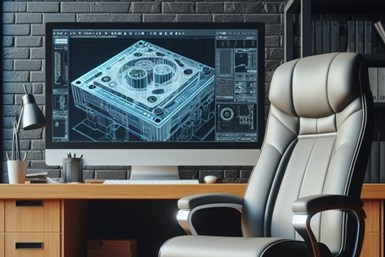
I might be sharing information you’re already familiar with, but I want to quantify a challenge and initiate a conversation within the moldmaking community on how to address it. In discussions over the past year, a critical concern has emerged — there’s a shortage of skilled mold designers and engineers.
Collaborating with our director of market research, Jan Schafer, we conducted a quick survey of the MoldMaking Technology audience to assess the current and future state of this shortage with quantitative data, potentially helping support a case for more education and training targeted at mold design. Our goal is to explore ways to cover and ensure a sustainable supply of quality mold designers and engineers.
With a base of nearly 200 qualified respondents representing diverse industries and plant sizes, the survey provides valuable insights into the state of mold design. Although some relief is provided by the fact that most shops currently employ as many or more mold designers compared to 5 years ago, the relative shortage remains a significant challenge.
Here are the survey’s key findings:
- Concerning Trajectory: The availability of mold design as a skillset is on a concerning path, with potential implications for the industry’s future.
- Imminent Shortage: If current patterns persist, a significant shortage of quality mold designers is anticipated in the next 5 years.
- Urgency to Intervene: While many shops report having as many or more mold designers compared to 5 years ago, the relative supply falls short of the growing need.
- Quality Concerns: Dissatisfaction with on-the-job training raises questions about the quality of mold designers, with only 7% expressing total satisfaction.
In light of these findings, here are a couple of recommended actions:
- Immediate Intervention: Initiate educational and training programs targeted at mold design to counteract the decline in availability.
- Exploration of Alternatives: Encourage innovative approaches to deliver mold design capabilities.
As the industry faces these challenges, collaboration between educational institutions, industry stakeholders and businesses becomes crucial to ensure a sustainable and skilled workforce in moldmaking for design and engineering.
I’d like to hear from you on this issue, especially from those who have taken any action and are seeing positive results, so I can share your successes in MMT to help the overall industry tackle this issue today. Let’s work together on this! Reach out to me at cfuges@gardnerweb.com.
Related Content
-
How to Use Continuing Education to Remain Competitive in Moldmaking
Continued training helps moldmakers make tooling decisions and properly use the latest cutting tool to efficiently machine high-quality molds.
-
Making Mentoring Work | MMT Chat Part 2
Three of the TK Mold and Engineering team in Romeo, Michigan join me for Part 2 of this MMT Chat on mentorship by sharing how the AMBA’s Meet a Mentor Program works, lessons learned (and applied) and the way your shop can join this effort.
-
Cross Training, In-House Capabilities and Collaborative Design Move Helm Tool Forward
Cross-training, bringing it all in-house, molding and collaborative design are essential to Helm Tool's success.

















